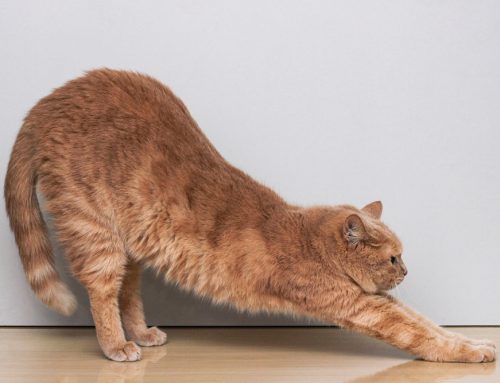Living with a cat can be a mysterious, but rewarding, experience. Indoor cats need the ability to engage in natural cat behaviors in a safe, predictable environment. The Billings Animal Family Hospital team recommends five enrichment techniques to help keep your indoor cat physically and emotionally healthy.
#1: Set up a cat-friendly physical environment
Cats in the wild actively hunt for 10 to 20 small prey per day, and spend the rest of their time sleeping. Your cat needs a quiet, secure resting area where they are not stressed by loud noises, other household cats, outdoor cats who approach windows, dogs, or small children. Vertical areas, such as perches or cat trees, will satisfy your cat’s natural desire for height. If you have a multicat household, ensure they have enough resting space to maintain a social distance of 3 to 10 feet. Consider providing outdoor time for your cat in an enclosed pen or window box, and see if they enjoy brief excursions on a harness and leash.
#2: Provide enticing food and water for your cat
A natural predator may find that dry food left in a bowl all day not only becomes monotonous, but also causes weight gain. Find ways to meet your cat’s nutritional needs, and activate their prey drive with food hidden in different areas, devices that dispense food on cat contact, or hollow toys filled with food. In multicat households, designate separate feeding areas to acknowledge their natural tendency to be solitary hunters. Also, cats prefer running water in the wild, and may appreciate access to a recirculating water fountain.
#3: Promote good litter box etiquette for your cat
To help ensure your cat consistently uses the litter box, provide a large, open box in a quiet area. Avoid enclosed litter boxes that may trap odors, and keep food and water bowls in a separate location. In multicat households, provide one litter box per cat, plus an extra, and try to place the boxes in different parts of the house. Cats tend to be fastidious, so scoop their litter daily, and wash their litter box with soap at least monthly. Many cats prefer unscented, clumping litter, but your cat may have their own favorite.
#4: Allow your cat to determine their social style
Take cues from your cat on the time, type, and duration of social contact they want. Your cat may prefer snuggling in your lap, gentle petting, or engaging in active play. In multicat households, provide separate resting places, toys, and perches. Cats in multicat households can become best friends, or simply live under the same roof.
#5: Understand and adapt to natural cat behaviors

Your cat needs outlets to scratch, chew, and play, which are normal activities that can become a hazard to furniture, plants, or other household items. Consider the following to keep your home damage-free, and allow your cat to engage in natural cat behaviors:
- Scratching — Your cat’s claws are maintained by scratching, and cats claim ownership of favorite areas by secreting pheromones in their paws. A scratching post tall enough for a good stretch, with rough material, such as sisal rope or coarse natural fiber, can help save your furniture. Cats tend to scratch when they wake, so a scratching post near their resting area is ideal. Apply double-sided tape, tin foil, or the pointy side of a carpet runner where you don’t want them to scratch. Once your cat uses their scratching post regularly, gradually move it to the desired location. Multicat households require multiple scratching posts. Regular nail trims are essential for all indoor cats.
- Chewing —Redirect your cat’s chewing behavior by providing live greens or cat-safe plants. If needed, rub your cat’s plants with tuna juice or wet cat food to stimulate their interest. Keep other plants away from your cat’s resting area, to ensure they are not exposed to any toxic plants. Some cats may enjoy specific chew treats, such as dried fish, and beef or poultry jerky.
- Play — Stalking, chasing, pouncing on, and biting prey is hardwired cat behavior. Prey-sized toys that move, are unpredictable, squeak, chirp, swing, or vibrate are especially appealing. For interactive play, use toys on a wand or stick to avoid close contact with your cat. Laser pointer sessions should end with a treat, to prevent frustration because they couldn’t catch their prey. Rotate different toys to provide variety, and provide multiple short play sessions per day. Toys don’t need to be expensive—cats love to play in paper bags or boxes, bat crumpled paper, or attack socks filled with cotton balls. Self play for your cat can include a toy hanging on a doorknob, puzzle games, chasing a ball or self-propelled toy, and wrestling with catnip-stuffed fuzzy mice.
Some people refer to cats as “semi-domesticated,” but a cat can fill your home with life and love. If you have questions about how to help your cat thrive indoors, don’t hesitate to contact Billings Animal Family Hospital for a consultation.








Leave A Comment